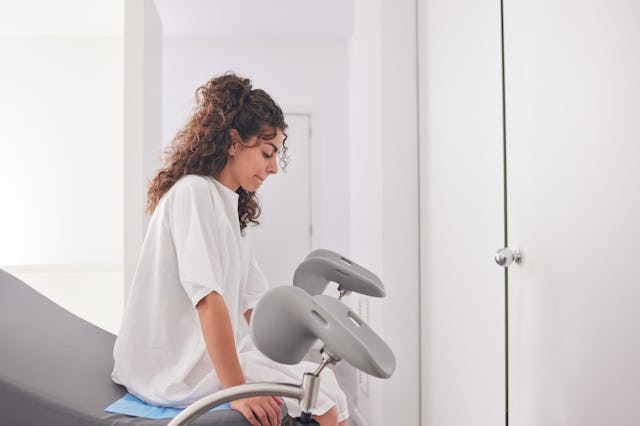ACOG Is (Finally) Addressing IUD Insertion Pain With New Guidelines
Personalized counseling and patient autonomy are just as important as pain relief itself, the organization says.

Last August, the Centers of Disease Control and Prevention (CDC) released a statement urging providers to be more responsive to patient pain during IUD insertions, calling for a “person-centered” plan for pain management based on patient preference. And now, the American College of Obstetricians and Gynecologists (ACOG) has announced its guidance on pain management for in-office uterine and cervical procedures.
While there are plenty of procedures that will be affected by this guidance — including endometrial biopsy, hysteroscopy, intrauterine imaging, and cervical biopsy — one of the most common is the placement of IUDs, including Paragard, Mirena, Kyleena, Liletta, and Skyla. These are flexible, T-shaped devices inserted into the uterus through the vagina to prevent pregnancy and use either hormones or copper to repel sperm. There are many benefits to this method of birth control: IUDs last for years but are not permanent, so if you change your mind about wanting to start a family, it can be quickly removed.
But while it’s a particularly good option for those who want to avoid pregnancy for years, but not forever, insertion (and sometimes removal) is often painful. After all: someone is putting a foreign object into your uterus through your cervix. While the cervix is flexible the opening is tiny, especially among women who have not had a vaginal delivery. We’re talking centimeters. But the reality of that pain, or at least the possibility of it, has not been universally recognized by healthcare providers.
“As a women’s health nurse practitioner, I treat patients every day who express anxiety about pain related to common procedures like IUD placement,” said Genevieve Hofmann, DNP, WHNP, coauthor of the guidance. “Unfortunately, many patients feel their pain has been diminished or dismissed by their clinicians, which data shows can lead to patient dissatisfaction and distrust. ... I am excited that this guidance will ensure more ob-gyns and clinicians are discussing pain management options with their patients, and, most importantly, that fewer people will have to endure pain to obtain procedures that are necessary for their health and well-being.”
Pain Management for In-Office Uterine and Cervical Procedures, was drafted by ACOG’s Clinical Consensus Committee on Gynecology and urges clinicians to discuss pain management options with patients, whom they note should have more autonomy over their choices. Among those options: local anesthetics (including idocaine spray, lidocaine-prilocaine cream, and paracervical block) for IUD insertions. Recommendations for other procedures vary, but may also include local anesthetics (topical or injected), non-steroidal anti-inflammatory drugs (NSAID, like ibuprofen), and other medications such as misoprostol.
In the new guidelines, ACOG recognizes that pain and anxiety about pain — as well as systemic racism — can keep patients from accessing necessary or beneficial care. Pain management, the document says, should include counseling that is individualized, culturally competent, trauma-informed, and guided by shared decision-making.
“What I hope clinicians will take away from this guidance is the absolute importance of comprehensive pain management counseling,” said Christopher M. Zahn, MD, FACOG, chief of clinical practice and health equity and quality at ACOG. “Not just for mitigating pain in the moment but also for improving trust with our patients and ensuring better access to gynecologic health care for every person.”
We hope so, too.